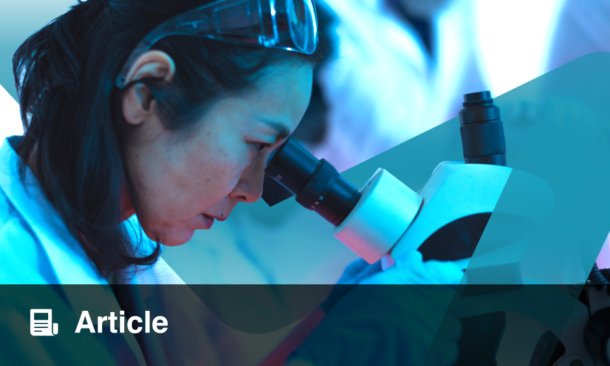Author: Anaya Malik, Editorial Co-ordinator
CONTRIBUTIONS to the European Association for the Study of Diabetes (EASD) Virtual Meeting 2020 included the far-reaching ‘Precision Diabetes Medicine in Practice’ held on 23rd September 2020. The virtual session considered the scope for precision medicine within diabetes care and outlined plans for forging a path ahead to incorporate precision medicine into medical training and patient care. The session was co-chaired by Dr Paul W. Franks, Lund University Diabetes Center, Lund, Sweden, and Prof Dana Dabelea, Lifecourse Epidemiology of Adiposity & Diabetes (LEAD) Center at the Colorado School of Public Health, Aurora, Colorado, USA. Prof Dabelea introduced Dr Louis Philipson, Director of the Kovler Diabetes Center, Chicago, Illinois, USA, a world-leading authority on diabetes, as the speaker for the presentation in which he discussed the recently published consensus report1 for the Precision Medicine in Diabetes Initiative (PMDI) by the American Diabetes Association (ADA) and the EASD. Dr Philipson used the consensus report and other pertinent published works to explore what precision medicine is, what it could look like in practice, and the underlying signs needed to be part of a future effort.
DRIVING PRECISION MEDICINE IN DIABETES CARE
Dr Philipson is a member of the task force that orchestrated the consensus report; the task force played a key advisory role, holding meetings with larger groups that led to the joint consensus statement. The initiative relies on expertise and collaboration from many stakeholders garnered through a hub-and-spoke model of working groups reporting to a steering committee, with the overall initiative managed by an executive oversight committee. The approach to precision medicine in diabetes has been to incorporate and build evidence for its use in diabetes practice to achieve quantifiable, implementable, and probabilistic outcomes based on aetiology and risk scores. The team are currently in the process of establishing data for a second set of evidence-based reviews.
The effort began in 2018, when key experts supplied a definition for precision medicine in diabetes: “An emerging approach for disease treatment and prevention that takes into account individual variability in genes, environment, and lifestyle for each person.” The concept of precision medicine is not unconventional. Clinicians have always assessed a patient for their illness, reviewed their ailments and symptoms, recognised patterns, and provided the most appropriate therapy. The visibility of detailed characteristics of human biology is now clearer owing to innovations in biomarkers, bioimaging, wearable technology, and big data from electronic medical records, health insurance databases, and other platforms. Rapidly evolving computational power and bioinformatics methods are creating unprecedented opportunities to better understand diabetes and other complex traits. Beyond that, identifying hidden structures in datasets and linking these structures to outcome data will help to yield insights into the management of this disease. Consequently, it can be argued that bigger data pools and technological advances have driven precision medicine to provide greater opportunities in practice than previously experienced. Physicians, however, are lacking in experience, training, and time to align increased knowledge of lifestyle and environmental risk factors in diabetes.
Diabetes remains a serious condition and affects one in 11–12 people worldwide, although they may be unaware. There is a gap in the understanding of the molecular and environmental principles of diabetes that prevent repair of pathophysiological mechanisms in individual people to ultimately prevent disease progression. The increasing numbers of people with diabetes incurs greater healthcare strains and cost owing to the predisposition they face for microvascular end-organ and other severe complications. Ongoing development of drugs to control blood glucose levels, the main parameter for diabetes diagnosis, may alleviate aspects of disease outcome but does not cure the disease. According to Dr Philipson, drug development in the USA is slow, expensive, and often faces failure: development of the average prescription drug costs approximately $2.6 billion USD; the drugs take 11–14 years to come into market; just one in every 10,000 compounds get approval from the U.S. Food and Drug Administration (FDA); and the conditional probability of getting a compound to the market from the Investigational New Drug Application is <1%. Dr Philipson explained that several studies have demonstrated that lifestyle modifications can have a greater effect than drugs such as metformin in treating diabetes, but these changes are challenging for patients to engage in and sustain long-term. There is additional difficulty in determining diabetes strategies that work for different populations across the globe.
People with diabetes are disproportionally affected by coronavirus disease (COVID-19). This disparity has highlighted that parts of the world struck most significantly are those with the fewest resources and least equipped to counter the overwhelming burden of the disease and its complications; therefore progress, and new approaches to it, are urgently needed. The taskforce responsible for the PMDI has partnered with authoritative parties to show that minority groups are at a higher risk of disease.
THE VEHICLES OF PRECISION MEDICINE
Executing precision medicine for diabetes care is a concept that is all-encompassing. Dr Philipson shared that genetics, typically hailing much attention in precision medicine, is helpful but is only part of the larger vision of precision medicine. He introduced the key areas in precision diabetes medicine: precision diagnostics, prevention, treatment, monitoring, and prognostics. Each of these concepts has been identified and detailed in the consensus report. A precision diagnosis was defined by Dr Philipson as “a probability-based decision, typically made at a specific point in the natural history of a disease, and neither an absolute truth nor a permanent state.”
Dramatic applications of precision diagnostics in monogenic diabetes have included transcending genetics to provide insights into specific therapy choices that specifically target the underlying aspects that used to be considered rare, but are now seen in 2–3% of the total population of younger adults or children with diabetes. Ideal approaches to prevention of diabetes require more innovative, evidence-based reviews. Precision prevention of diabetes should determine the likely responses to health interventions and risk factors, optimise interventions, and minimise risk factor exposure for an individual. Precision monitoring includes an array of concepts including measuring blood sugar, biological markers, diet, sleep, and psychological and physiological states; understanding of these factors provides a better projection for the practical approach in treating a patient. Precision prognostics is the notion “to improve the precision and accuracy with which a patient’s disease-related outcomes are predicted using information about their unique biology, environment, and/or context.” Dr Philipson explained that, if a disease-related outcome such as hypoglycaemia can be predicted based on likelihood, they may be able to provide key insights and predictive power in patient-centred outcomes.
THE FINISHING LINE AND FUTURE PLATFORMS
The future stages of the initiative are visualised in four key phases. The next phase, Phase 2, projected to take place between 2020–2023, will include publishing a second consensus report, seeking research funding, completing systematic reviews of evidence, and disseminating findings via research and educational symposia. In Phase 3, the team expect to continue this long-term research and implement clinical guidelines for practicing precision diabetes medicine. Phase 4 will begin in the year 2025 and continue beyond, when the team and the constructed guidelines will be instrumental in physician and patient education.
Dr Philipson reminded the virtual audience that genetics is only one part of the vision that the team is working toward. Precision and personalised medicine have achieved worldwide and enthusiastic acclaim by healthcare professionals and people with diabetes. The growing burden of the disease worldwide has provided the need to pave a path for the future, one that considers all aspects of a patient-centred approach and can be adapted to specific cultures, geographies, and individuals.








